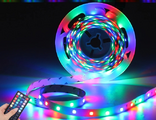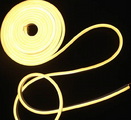How Do LED Strip Light Factories Ensure Product Safety?
Ensuring Product Safety in LED Strip Light Manufacturing
When it comes to LED lighting, safety is as critical as functionality and aesthetics. An LED strip light factory must incorporate several stringent safety measures to ensure that its products are reliable and safe for widespread use. Here’s how top manufacturers maintain high safety standards across their product lines.
Rigorous Material Selection
Safety begins with the choice of materials. Quality LED strip light factories source high-grade, non-flammable materials to minimize the risk of fire. For example, the polymers used in the casing of the strips are typically rated for their fire resistance, adhering to international safety standards such as UL 94V-0, which ensures that the material will stop burning within 10 seconds of being ignited.
Advanced Electrical Design
Manufacturers design LED strips to operate safely under a wide range of electrical conditions. This includes integrating:
- Overvoltage protection: to prevent damage from unexpected surges in electrical supply.
- Short circuit protection: to automatically cut power in the event of a fault, preventing further damage or fire risk.
- Stable current drivers: to provide consistent voltage and prevent overheating.
These features are crucial for ensuring the LEDs operate safely even under variable and potentially harsh conditions.
Stringent Quality Control Processes
Every LED strip light undergoes multiple stages of testing before it leaves the factory. These tests include:
- Electrical testing: Ensures each strip meets or exceeds its electrical specifications for voltage and current.
- Thermal testing: Monitors the heat generation and dissipation capabilities of the strip to ensure it operates within safe temperature limits.
- Durability testing: Subjects the strip lights to conditions that mimic long-term usage to identify any potential failures early.

Compliance with International Standards
An LED strip light factory ensures safety by adhering to a variety of international safety standards. Key certifications include:
- UL Listing: Indicates that the product has been tested by Underwriter Laboratories and meets their stringent safety requirements.
- CE Marking: Confirms that the product meets the safety directives of the European Union.
- RoHS Compliance: Ensures the product is free from hazardous substances like lead and mercury.
Training and Continuous Improvement
Factories invest in training their staff to handle materials and equipment safely. This training is part of a broader commitment to continuous improvement, where feedback from product testing, customer complaints, and new safety protocols are regularly incorporated into the manufacturing process.
Packaging and Handling
Finally, safe packaging practices are essential to protect the LED strips during shipping and handling. Factories use anti-static materials and robust packing techniques to ensure that the products arrive at their destination without damage, which could compromise their safety when installed.
Visiting a well-regulated LED strip light factory provides insight into the comprehensive steps taken to ensure that every product meets the highest safety standards. By adhering to these practices, manufacturers not only safeguard the end-users but also enhance their brand’s reputation and reliability in the competitive LED market.





